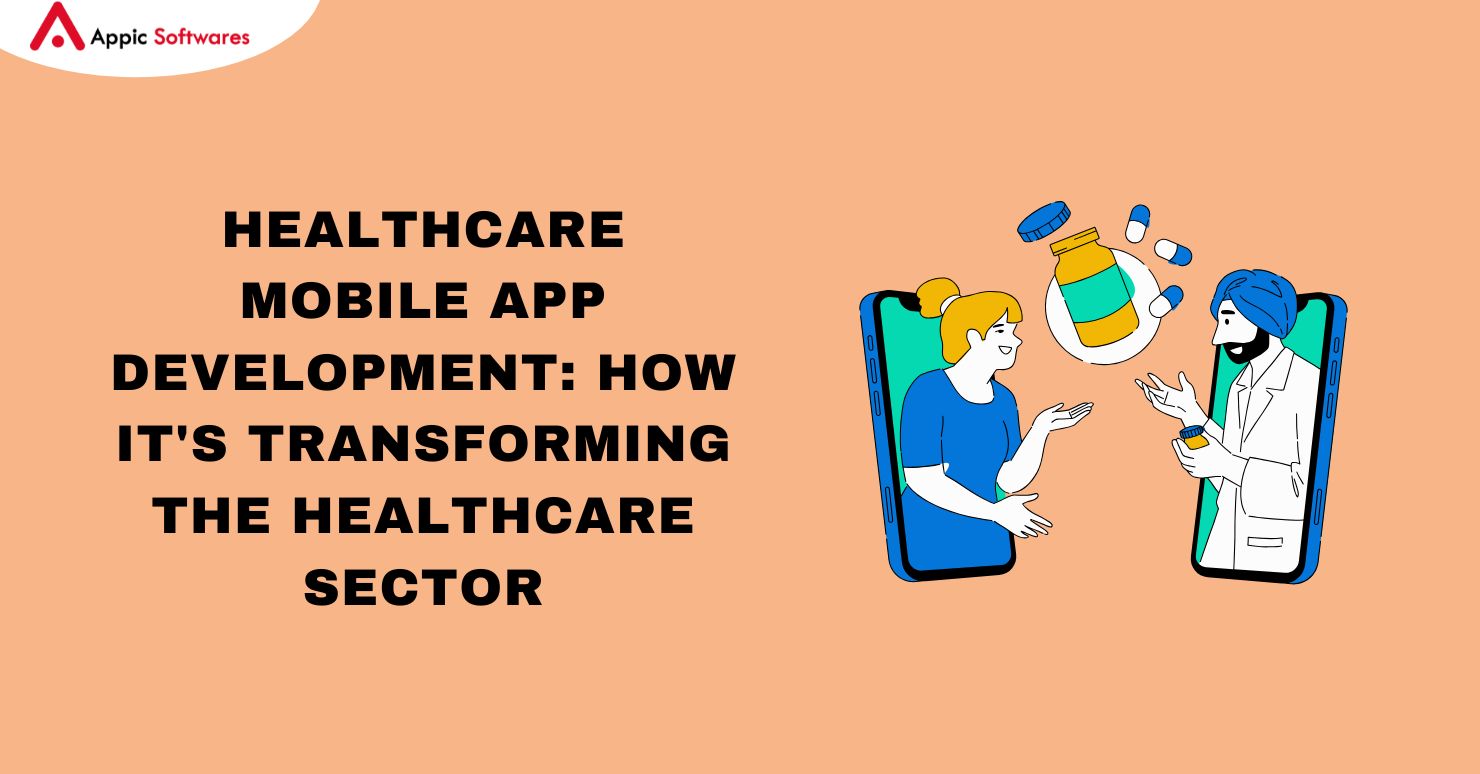
The field of telemedicine is growing quickly, and utilization is now far higher than it was before the epidemic. In response, for a rapid and easy transition into virtual treatment, healthcare providers are using white-label telemedicine software. These ready-to-use systems, which include capabilities like text messaging, video consultations, and electronic prescriptions, may be personalized with a provider’s branding. Check out the blog to learn more about building a white-label telemedicine app.
Healthcare providers are quickly adopting virtual care solutions as a result of the telemedicine boom. This increase, which is greater than pre-pandemic numbers, is indicative of a significant shift in patient expectations and the overall healthcare environment.
The creation of white-label telemedicine apps is a quick fix for the pressing need for effective and easily accessible virtual healthcare services. To develop a white-label telemedicine app that attracts patients and stands out in the competitive digital healthcare industry, we’ll examine the essential stages, essential features, and necessary financial commitment, as this blog will demonstrate.
What Precisely Is A White-Label Telemedicine App?
Healthcare providers may create a digital healthcare solution that is customizable and branded as their own by using a white-label telemedicine app. It offers businesses a rapid and effective option to enter the virtual care market without requiring significant development. This pre-packaged program includes features like prescription management, encrypted chat, and video consultations to facilitate distant patient-doctor interactions.
For healthcare providers who want to create a unique brand identity, the customization provided by white-label telemedicine software is essential. Healthcare companies may strengthen their brand and gain patients’ trust by using logos, color schemes, and other branding components. This customized touch goes further to produce a seamless experience that fits the organization’s preexisting reputation.
Grand View Research projects that the telemedicine industry will grow at a compound annual growth rate (CAGR) of 24.0% from 2023 to 2030 when it is valued at $455.26 billion. Improved internet penetration and smartphone developments that close service delivery gaps are driving the market’s rising growth.
Moreover, a significant driver of the growing market size is the augmented need for virtual health monitoring and chronic condition management, which is indicative of a wider movement towards proactive remote healthcare solutions.
What Sets White-Label Telemedicine Apps Apart from Solutions That Are Custom Built?
Customized telemedicine solutions are developed from the ground up to address particular requirements; they provide unparalleled flexibility but come with significant time and resource costs. White-label applications, on the other hand, offer a more efficient method that enables businesses to enter the virtual care industry faster and with less difficulty with development. The degree of customization and development participation is where the main distinctions lie.
Think of a telemedicine firm, for example, that decides to use a custom-built system to include customized features suited to a certain healthcare niche. On the other hand, a clinic seeking to enter the telemedicine market quickly can select a white-label app, which offers advantages including a quicker launch and lower development expenses.
What Justifies Investing in the Development of a White-Label Telemedicine Platform?

It’s critical to remain abreast of technological advancements as the healthcare sector continues to grow quickly.
The following are strong arguments in favor of purchasing a white-label telemedicine platform:
Increased Access
Mobile healthcare applications are revolutionizing the industry by giving patients better access. White-label telemedicine applications greatly increase patient access by providing healthcare services across national boundaries. It makes it easier for medical professionals to conduct remote consultations, which lets them treat more patients effectively. This increase in accessibility boosts patient care as well as the prominence of healthcare companies.
Reduced Technical Load
Choosing a white-label solution cuts down on technical difficulties considerably. It removes the requirement for your staff to have deep technical skills. By giving the development company the heavy work, healthcare providers may profit from white-labeling a telemedicine app. You start concentrating on user acquisition and strategic deployment instead of development. This method ensures seamless functioning by streamlining app upgrades and maintenance. You provide high-quality healthcare services through a dependable, expertly designed-app. Your platform keeps up to date with less work and money thanks to this.
Savings on Costs
Overestimating the cost of developing a distinctive white-label telemedicine app is a common mistake. Recognize that healthcare providers may save a lot of money by investing in unique white-label telemedicine solutions. Long-term savings balance out the development cost by eliminating the need for physical space and optimizing administrative procedures.
Enhanced Convenience
The utilization of a white-label telemedicine app solution improves patient care by enabling remote access to health services. Patients may make appointment times, speak with doctors, and get medications with a few clicks. This greatly improves consumer convenience and happiness by doing away with the headaches of travel and waiting periods.
An advantage over competitors
In a congested industry, choosing white-label telemedicine platform development helps your software stand out. Providing a strong telemedicine service puts your company at the forefront of healthcare innovation. It exhibits a dedication to innovation, enhances patient retention, and draws in tech-savvy customers.
Elevated Scalability
Scalability is the key to the appeal of specially designed telemedicine applications. These systems adjust to rising demand as your healthcare business expands without requiring a substantial investment in physical infrastructure. They offer the freedom to scale up (or down) in response to changes in patient volume, industry patterns, and the changing business requirements of healthcare providers.
Essential Elements and Capabilities of White-Label Telemedicine Platforms
These are the essential elements and functionalities that every operationally excellent telemedicine application has to have. For the creation of a smooth and effective virtual care experience, several qualities are essential.
Making Appointments
For ease, a white-label telemedicine app should contain simplified appointment scheduling and should make it simple for people to make, change, or cancel appointments, which would improve time management for both patients and doctors. The system has to be user-friendly so that scheduling appointments and seeing available times may be done quickly and easily.
Voice and Video Calling
One of the key components of developing white-label telemedicine apps is high-quality voice and video calling. It improves the experience of receiving care by enabling patients and healthcare professionals to consult in real time. Strong and intuitive functionality is required to provide dependable communication across different devices and networks.
Calendar Scheduling
A successful calendar connection enables appointment reminders and synchronization with individual calendars. It is essential for maintaining the punctuality and organization of healthcare workers as well as patients. To avoid scheduling conflicts, this functionality should accept a variety of calendar formats and offer real-time updates.
Messages and Reminders
The creation of white-label telemedicine apps must have timely notifications and reminders since these features greatly improve patient compliance. They act as a patient’s personal health manager, reminding them to take their meds, show up for appointments, or adhere to their treatment regimens. Proactive involvement enhances health outcomes and preserves treatment continuity.
Synchronized Medical Records
A significant advancement in telemedicine is the integration of automated clinical notes, which expedites the recording procedure for medical professionals. Ensuring precise and efficient capture of every patient encounter is a critical aspect of quality control and legal compliance, which this function guarantees. It also makes it easier for medical workers to coordinate treatment more effectively.
Gateway for payments
The creation of a successful white-label medical app requires a secure payment mechanism. It guarantees patients that their data is secure in addition to handling payments. To safeguard private financial data and ensure smooth billing transactions, the payment system needs to adhere to industry standards such as PCI DSS.
Health Records in Electronic Form
A vital component of contemporary healthcare, electronic health records (EHRs) offer a thorough digital record of a patient’s medical history. They make it possible for doctors to monitor patients’ changes in health over time, guarantee the correctness of their prescriptions, and easily exchange vital information with patients and other medical experts.
Online Data Storage
Reliable cloud storage options provide telemedicine platforms with unmatched advantages including remote patient information access and real-time data synchronization. In today’s mobile-first society, this technology guarantees that patient data is easily accessible for medical consultations and safe from illegal access.
Multilingual Assistance
White-label telemedicine software must include multilingual support to be usable by a wide range of patient populations. Patients from different language origins may utilize the services with confidence thanks to it, which might boost patient happiness and participation as well as their health results. The effect and reach of health services can be greatly increased with this help.
Dashboard for Administration
One essential tool for handling the complexity of telehealth services is an administrative dashboard. It offers strong scheduling, reporting, and operational supervision capabilities to healthcare managers and practitioners. A well-designed dashboard on a white-label telemedicine platform eases administrative costs, improves medical delivery, and simplifies operations. It achieves this by providing a thorough understanding of patient interactions and the administration of healthcare services.
Safety and Adherence
The foundation of every telemedicine application development is security and compliance. Developing white-label telemedicine apps must include sophisticated security mechanisms and guarantee adherence to HIPAA and other healthcare rules. These are non-negotiable requirements. They maintain the integrity of telehealth services and boost patient confidence in the digital healthcare system by protecting patient data from breaches and illegal access.
AR for Visualization of Anatomy
With the use of augmented reality (AR), telemedicine platforms gain a dynamic edge as patients and doctors may engage with three-dimensional (3D) human anatomy models. By offering interactive, understandable depictions of intricate medical processes and illnesses, this technology has the potential to completely change patient education. It improves comprehension of diagnoses and treatments, leading to more interesting and educational conversations between physicians and patients.
AI-Powered Checker for Symptoms
An AI-driven symptom checker is a cutting-edge instrument that greatly enhances patient interactions. Before seeing a medical practitioner, it helps individuals comprehend their illnesses by assessing symptoms and offering possible diagnoses. This function makes sure that the first patient interaction is educational and points them in the direction of the right care level, while also optimizing the care route and maximizing the productivity of clinical personnel.
Integration of Wearables
Wearables that are integrated with telemedicine systems allow for real-time, continuous monitoring of critical health parameters, yielding a wealth of information for managing chronic diseases and promoting preventative treatment. To enable proactive health management and individualized treatment plans based on data gathered from their everyday lives, patients can communicate updates on their heart rate, sleep habits, and activity levels directly with their healthcare professionals.
Process of Developing White-Label Telemedicine App
These are the necessary stages to begin developing a complete telemedicine system. Comprehending this procedure is essential for an effective launch.
Market analysis and strategy development
The foundation of a successful white-label telemedicine app development process is meticulous market research and strategic planning. Gain a thorough grasp of the healthcare needs of your target audience while analyzing rival products, new developments, and strict telehealth laws. Create a distinct value proposition that sets your app apart from the competition. Examine carefully what features and functionalities are necessary to meet user expectations and adhere to healthcare regulations.
Plan your income plan and consider per-transaction fees, freemium access, and subscription services. A realistic budget and schedule should be established, accounting for the intricacies involved in development and implementation. Establish measurable objectives and KPIs to track your development journey’s progress and make sure it stays on the right track.
Establishing Compliance and Security Procedures
White-label telemedicine solutions have to follow stringent guidelines to guarantee compliance with PHI and HIPAA laws. Maintaining patient consent protocols, using strong encryption techniques, and imposing strict access limits are essential. Maintaining data integrity and ensuring continuity of treatment need safe integration with Electronic Health Record (EHR) systems.
White-label telemedicine software must establish explicit permission levels and access controls to guarantee that security precautions are not just in place but strictly adhered to. To find and fix such vulnerabilities, regular risk assessments and penetration tests are essential. A crucial stage in the procedure is obtaining the permits and approvals required for telehealth operations.
Personalization and Application of Branding
Customization is crucial when modifying a system to meet certain operating requirements. This entails customizing the user interface to the visual identity of the business. To create a cohesive brand experience, color schemes, logos, and user experience components are changed. About halfway through, the white-label telemedicine platform transcends its status as a generic product.
It becomes an exclusive resource for the organization that adopts it. To support certain services, the procedure involves modifying the app’s functionality and connecting it with current systems to provide a smooth workflow. To ensure user adoption and retention, every component of the application must align with the brand’s culture.
Launching, Testing, and Ongoing Improvement
The app is rigorously tested to guarantee its functionality, dependability, and security before its official availability. Testing includes anything from backend load tests to usability trials. The deployment phase starts once testing verifies that the program satisfies every performance benchmark. A well-planned launch aids in obtaining preliminary user input for additional improvement. Following the launch, attention turns to continuous platform upgrades and improvements.
Updating and adding features regularly in response to user feedback and technology developments helps keep your telehealth software solutions cutting edge. so guaranteeing long-term success and flexibility in a digital healthcare environment that is always changing.
To ensure a customized and effective launch for your white-label telemedicine solution, you can further streamline and improve each step of this extensive process by partnering with a telemedicine app development firm like Appic Softwares.
The Cost of Developing a Telemedicine App
Several aspects go into calculating the cost of developing a custom white-label telemedicine app. The price range for developing a telemedicine app is between $40,000 to $300,000.
The most important aspect influencing the total development expenses of the app is its overall complexity. For example, you will pay less for a telemedicine app that is basic and has only a few capabilities, like appointment booking, than for one that is more complicated and has features like video conversations or AI diagnosis.
Additionally, developers with specialized knowledge in healthcare may provide a higher quotation. However, their background may provide a more polished and compiled output.
It takes more than just the initial app development cost to calculate the bespoke white-label telemedicine app development cost. It’s also essential to budget for continuous upgrades, server maintenance, and support.
Including outside services might increase the cost. The possible return on investment for each extra feature has to be assessed. Promising applications strike a compromise between usability, practicality, and affordability. An app that effectively assists patients and providers is the ultimate aim.
White-Label Telemedicine Platforms’ Future Trends
The telemedicine sector is changing quickly in tandem with technological breakthroughs. To stay ahead of the curve, one must comprehend the white-label telemedicine platform’s future developments. Remote care options are in more demand from patients as digital health expands.
The improvement of the patient experience is increasingly dependent on personalization. Another development that makes predictive health analytics possible is AI integration. These AI tools must be included in the construction of robust white-label telemedicine platforms. Better diagnoses and personalized care plans are provided by this kind of integration.
Blockchain technology is going to be very important. Telemedicine platforms offer improved data security and patient privacy. The use of AR and VR in remote diagnostics is something we cannot ignore.
Furthermore, interoperability is becoming a key component of smooth data flow. Platforms for telemedicine should provide broad device connections. This interconnectedness will improve the administration of comprehensive care.
Telemedicine capabilities will be significantly enhanced with the expansion of 5G. Telehealth services are more dependable and effective when there is faster connectivity. Global growth is another of the prospects for white-label telemedicine systems. Global healthcare networks are being created as a result of market reach expanding beyond national borders. Apps will need to be culturally sensitive and multilingual to accommodate this increase. Telemedicine is mostly about using cutting-edge technology to provide more effective and easily accessible healthcare.
The Advantage of Appic Softwares for Telemedicine App Development
Our specialty in providing healthcare app development is what makes Appic Softwares unique. We commit ourselves to creating cutting-edge and approachable telemedicine systems. Our objective is to use technology to close the gap that exists between patients and healthcare professionals. We make sure that our applications are usable by people of all ages and backgrounds by emphasizing intuitive design.
Our methodology for developing white-label telemedicine apps is flexible and scalable. We are aware that every healthcare professional has different requirements. We provide customizable choices to accommodate different company concepts. Our method makes it easier to provide telemedicine services, allowing providers to reach a wider audience without sacrificing security or quality.
We use cutting-edge technology to create telemedicine apps that are specifically tailored to satisfy the needs of contemporary healthcare. Our applications are designed to improve the effectiveness of medical services, from integrated appointment systems to secure texting and video consultations. Our powerful solutions are designed to enhance patient outcomes and optimize processes for providers.
After its debut, Appic Softwares continues to be dedicated to quality. To keep your telemedicine services at the forefront of innovation, we offer ongoing support and maintenance.
So, What Are You Waiting For?








